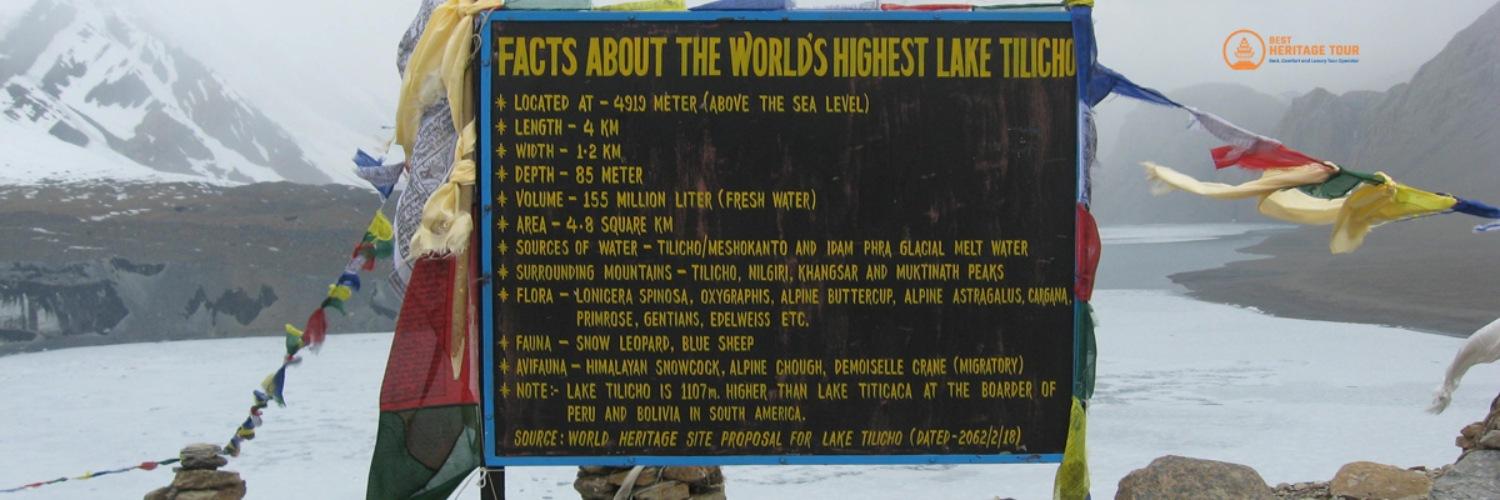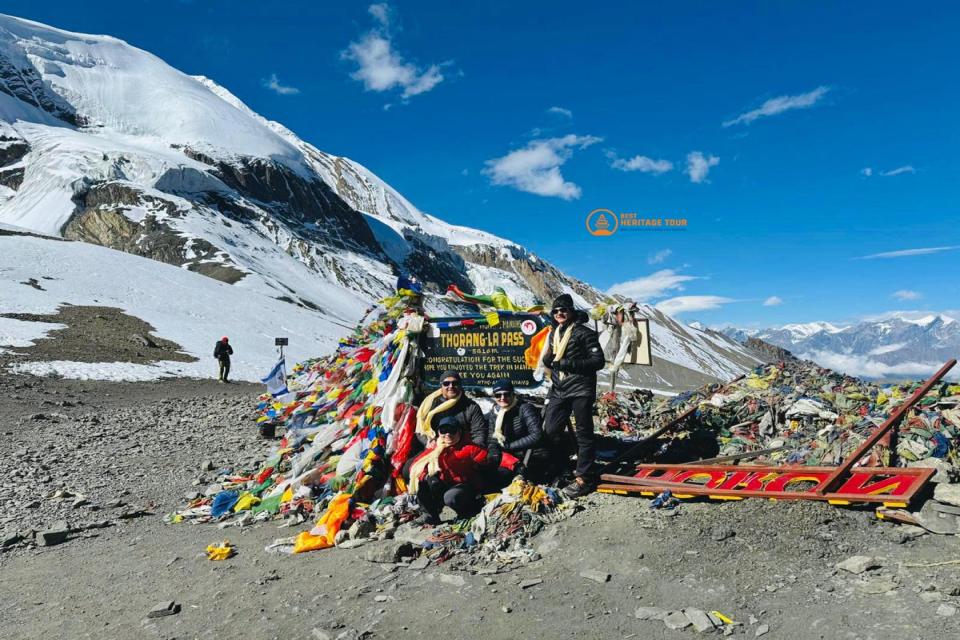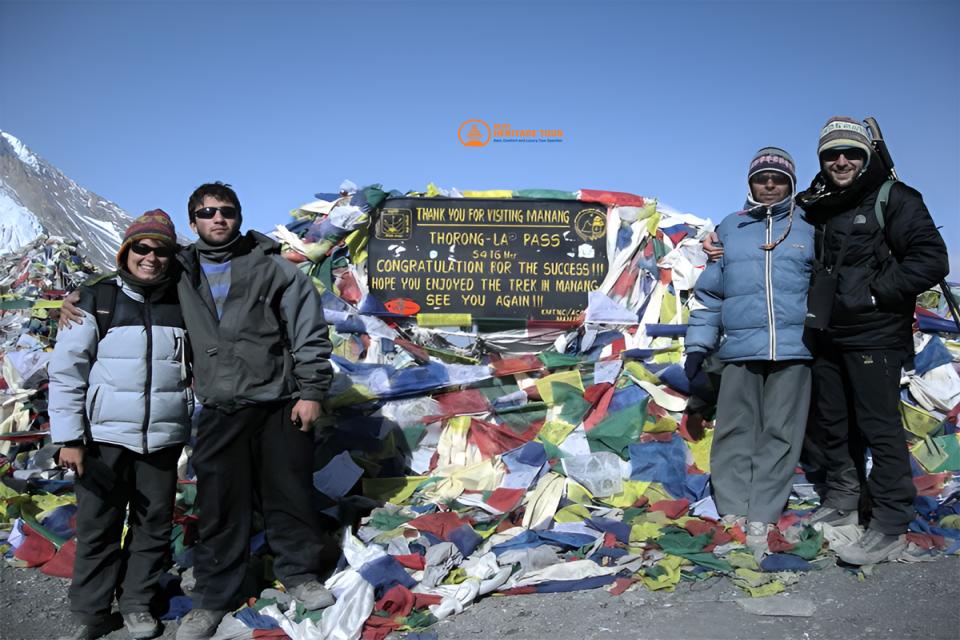Nestled in the heart of the mighty Himalayas, Tilicho Lake is one of the most mesmerizing destinations in Nepal. Known for its surreal turquoise water and sky-piercing surroundings, the lake is famous not only for its beauty but also for its unique geographical status - it is one of the highest lakes in the world, sitting at an astounding altitude of 4,919 meters (16,138 feet).
But one question echoes across travel forums and bucket lists alike:
Where is Tilicho Lake?
In this comprehensive guide, we’ll break down everything about Tilicho Lake’s location, its cultural and geographical significance, how to get there, and why it’s one of the crown jewels of Himalayan trekking.
Where Exactly Is Tilicho Lake Located?
Tilicho Lake is located in the Manang district of Gandaki Province, Nepal. Geographically, it sits in the Annapurna region, to the northwest of Kathmandu, and is reached via a detour from the classic Annapurna Circuit Trek.
More precisely, the lake lies in the trans-Himalayan zone between the main Annapurna massif and the Tibetan plateau. It is surrounded by towering peaks such as Tilicho Peak (7,134 m), Nilgiri, Gangapurna, and Khangsar Kang.
Coordinates:
-
Latitude: 28.6667° N
-
Longitude: 83.6500° E
The lake is fed by the glacial melt of the northern slopes of the Annapurna range, including glaciers from Tilicho Peak. This high-altitude marvel lies in a region that is dry, stark, and barren - yet hauntingly beautiful.
How to Get to Tilicho Lake: A Trekker’s Route Guide
There are no roads leading directly to Tilicho Lake. The only way to reach it is on foot as part of a multi-day trek.
Most trekkers access the lake via a detour from the Annapurna Circuit, starting from Besisahar or Chame and continuing to Manang - the main acclimatization hub in the region.
General Route Overview:
-
Drive from Kathmandu to Besisahar (6-7 hours by jeep/bus)
-
Drive or trek to Chame
-
Continue trekking through Pisang to Manang
-
From Manang, leave the main Annapurna Circuit trail and hike towards:
-
Khangsar Village
-
Shree Kharka
-
Tilicho Base Camp
-
Finally, hike up to Tilicho Lake
-
Trekkers usually return via Yak Kharka to rejoin the Annapurna Circuit and cross the famous Thorong La Pass (5,416 m) before descending to Muktinath and then traveling to Jomsom or Pokhara.
Trekking Duration:
-
Reaching Tilicho Lake from Manang takes 2 to 3 days, depending on your pace and acclimatization.
-
A full trek covering Tilicho Lake with Annapurna Circuit typically spans 10 to 15 days.
If you’re short on time but still want to experience Tilicho Lake, consider the Annapurna Circuit Short Trek with Tilicho Lake offered by Best Heritage Tour.
The Landscape: From Forests to the Moon
One of the most stunning aspects of Tilicho Lake is the ever-changing terrain you pass through on the way:
-
Lush green forests of pine and oak at lower elevations
-
Traditional villages rich in Buddhist culture
-
Rocky alpine deserts resembling a moonscape
-
Glacial valleys and moraines surrounding the lake
-
Deep gorges, high cliffs, and cascading waterfalls
By the time you reach Tilicho Lake, the scenery feels almost otherworldly - especially in the early morning light, when the water reflects the surrounding snow peaks.
Spiritual and Mythological Significance
So now that you know where Tilicho Lake is geographically, let’s talk about its mythological location.
In Hindu mythology, Tilicho Lake is often associated with the ancient Kak Bhusundi Lake, mentioned in the epic Ramayana. It is believed that this was the very lake where Sage Kak Bhusundi recited the story of Lord Ram to Garuda, the king of birds.
Because of this, many Hindu devotees consider Tilicho a sacred lake. Pilgrims often trek here to offer prayers, and some even attempt ritual bathing in its icy waters, although it's extremely risky due to the freezing temperatures.
Why Tilicho Lake’s Location Matters Geographically
Aside from spiritual allure, Tilicho Lake is of high geographical interest:
-
It is one of the highest altitude lakes in the world.
-
It sits near the rain-shadow area of the Himalayas, meaning it receives very little rainfall.
-
Its glacial source provides insight into Himalayan hydrology and climate change effects.
-
The lake is ice-covered for much of the year, providing a critical habitat for rare high-altitude species.
It’s not just a lake. Tilicho is a natural laboratory, a spiritual landmark, and a geographical marvel, all in one.
Climate and Best Time to Visit Tilicho Lake
Due to its high elevation, Tilicho Lake has a harsh alpine climate. Temperatures drop below freezing even in late autumn, and snowfall is common year-round.
Best Seasons to Visit:
-
Spring (March to May): Mild weather, clearer skies, rhododendron blooms
-
Autumn (September to November): Best visibility, stable weather, and dry trails
Avoid:
-
Winter (Dec-Feb): Extremely cold, trails may be blocked by snow
-
Monsoon (June-Aug): Risk of landslides and cloud-covered views
The lake itself may be frozen from December through April. While the frozen lake has its own stark beauty, access can be dangerous due to snow cover and avalanches.
Villages and Culture Around Tilicho Lake
The closest villages to Tilicho Lake include:
-
Khangsar - a peaceful village offering incredible views of Gangapurna and Tilicho Peak
-
Shree Kharka - a popular stopover with teahouses and dramatic ridge-top views
-
Manang - the cultural and logistical hub of the region
Here, you’ll witness the fusion of Tibetan Buddhism, traditional Nepali architecture, and warm Himalayan hospitality. Prayer flags, mani walls, and stone-roofed homes line your path, creating a journey as culturally rich as it is scenic.
Wildlife and Natural Beauty
The diverse elevation along the route offers an impressive variety of flora and fauna. You may come across:
-
Himalayan Tahr
-
Blue Sheep (Bharal)
-
Himalayan Griffon Vultures
-
Snow Leopards (very rare sightings)
-
Yaks and Pikas
In terms of flora, you’ll pass through juniper forests, alpine grasslands, and glacial tundra, depending on the season and elevation.
Quick Summary: Tilicho Lake Location Facts
|
Attribute |
Details |
|---|---|
|
Country |
Nepal |
|
Region |
Annapurna (Manang District) |
|
Altitude |
4,919 meters (16,138 feet) |
|
Access Route |
Annapurna Circuit via Manang |
|
Nearest Villages |
Manang, Khangsar, Shree Kharka |
|
Best Time to Visit |
March-May & September-November |
|
Activities |
Trekking, Photography, Cultural Immersion |
Why You Should Visit Tilicho Lake
Still wondering if the remote location is worth the trek? Here’s what you get:
-
The bragging rights of seeing one of the world’s highest lakes
-
Jaw-dropping views that no photo can do justice
-
A chance to challenge yourself at high altitude
-
A deeper connection with both nature and yourself
-
Cultural experiences in one of Nepal’s most mystical regions
This is the kind of destination that stays with you forever. It’s not just a place you visit - it’s a place that transforms you.
Ready to Visit Tilicho Lake? Let Best Heritage Tour Guide You
Now that you know where Tilicho Lake is, the next step is getting there with the help of a trusted guide. The trek can be complex, remote, and physically demanding - so going with an experienced operator ensures safety, logistics, and enjoyment.
Book the Annapurna Circuit Short Trek with Tilicho Lake Today!
Let Best Heritage Tour be your partner in the mountains. With expert local guides, customizable itineraries, and exceptional service, your Himalayan journey will be as smooth as it is thrilling.
Contact Best Heritage Tour:
Website: www.bestheritagetour.com
Email: info@bestheritagetour.com / bestheritagetour@gmail.com
Phone/WhatsApp/Viber: +977-9851149197
Office: Thamel Marg, Kathmandu, Nepal
Start your Tilicho adventure today and discover where beauty meets altitude.
Author: Best Heritage Tour
Date: 27th July, 2025



